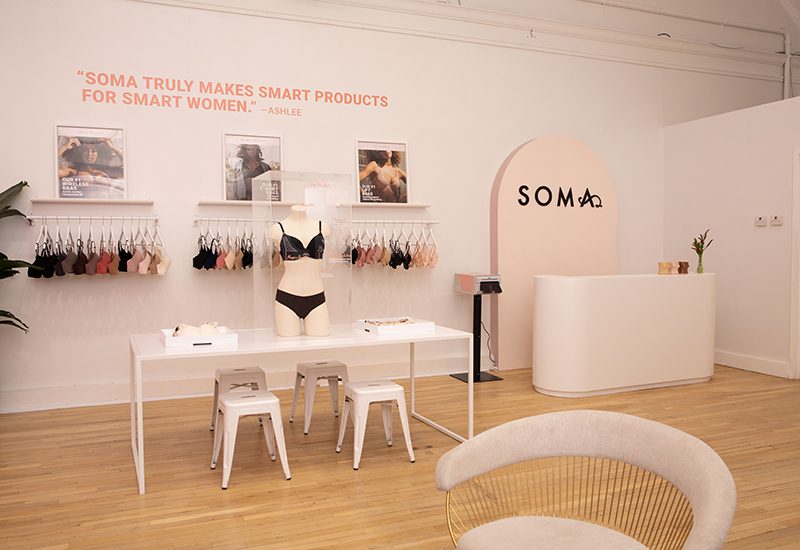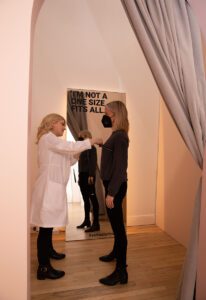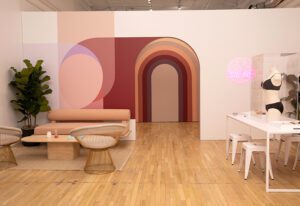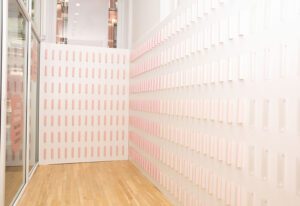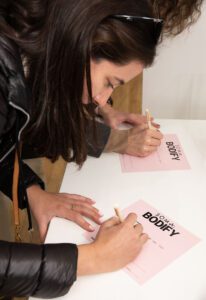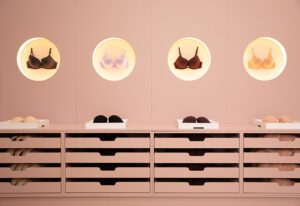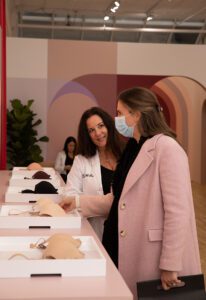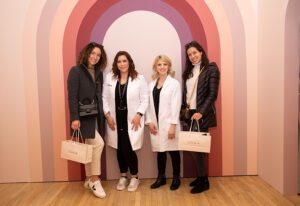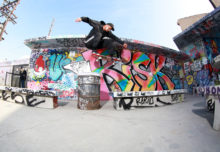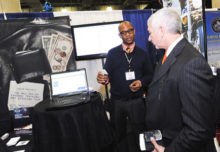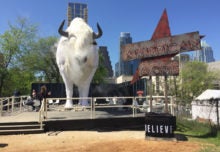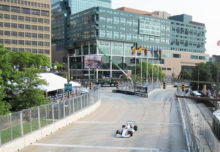Since its establishment in 2004, intimates apparel brand Soma has built more than 250 boutiques and outlets in locations nationwide, but New York City isn’t one of them. So with a new “smart bra” to introduce and a desire to expand its exposure in a city brimming with influencers and fashion editors, the brand headed to the Big Apple’s SoHo neighborhood, Feb. 18-19, to deliver the Soma Innovation Lab experience to tastemakers, press and consumers alike.
The timing of the pop-up was crucial, according to Soma. The brand’s technology-backed Bodify bra was set to launch on Feb. 23, and it was the perfect product to showcase the innovation and craftsmanship that goes into Soma apparel—Bodify took three years to create and incorporated the input of 1,500 women.
“From the earliest days of the brand, our process and our product development pipeline has been fueled by talking to women, hearing their problems and challenges, and then creating product that solve for those challenges,” says Kimberly Grabel, svp-marketing at Soma. “And the reason we wanted to do this pop-up at this moment is there is no product that better exemplifies the totality of what Soma is about than Bodify. That idea that everything that Soma is manifests in this one product so beautifully was the reason that we said, ‘this is our moment.’”
 More Experiential Retail Strategies:
More Experiential Retail Strategies:
- How Experiential Tactics are Ushering in a Brick-and-Mortar Retail Revival
- How Sephora and Kohl’s Used QR Codes to Deliver a Mobile-first Beauty Event
A sidewalk sign outside of the pop-up space lured passersby by asking if they related to common bra problems, like “I fluctuate weight and I don’t want my bra to dig into my skin” and “I breastfed my kids, my boobs aren’t the same size.” Inside the pop-up, based on its intensive product research and development process, Soma leaned into the idea of a testing lab, but with soft, feminine design touches evocative of its brand aesthetic. At the front of the store, for instance, visitors were met with a wall of test tubes. A nearby table invited them to write down their biggest “bra-blem” on a pink slip of paper, then tuck it into one of the tubes. The installation served as a fun photo moment as more notes were added, but will also help inform the brand’s next round of product innovations.
Next, with help from top Soma bra-fit specialists brought in from the region (wearing lab coats, no less), consumers learned about the story behind Bodify and were led to what Grabel describes as “a scientific looking display of the bras with cutaways where you can see the bra celebrated almost like a specimen.” The installation featured drawers underneath where shoppers could grab their preferred Bodify size and color, and purchase the product at a small point of sale toward the back of the pop-up. There were also smaller displays of products from some of Soma’s other key product lines, a lounge space, a hashtag printer (#SomaStartsWithMe) and a video wall projecting real women trying on the bra and experiencing its benefits, along with advertising and campaign imagery.
And then there were the “testing rooms,” fitting rooms that were walled-off at the back of the space where women could actually try the Bodify bra on for themselves and work with a specialist to determine the right size. Soma put extra thought and attention to detail into this area to ensure women felt safe and secure testing the product out in public.
At the end of the experience, visitors walked away with branded goodie bags. But Grabel hopes they left with a sense of empowerment, too.
“I hope people who participate in the space will take away this idea that you deserve more and that you should demand more,” she says. “It’s about ‘how do I demand more from the products that I’m getting, and who is delivering that for me?’ This bra took us three years to create, from talking to customers, to using materials that have never been used before, or never been used before in this application. That level of innovation tied to what we’re delivering is something that I think is exciting and should make people think differently about what we’ve been trained to expect.” Agency: Ludlow Grey.


